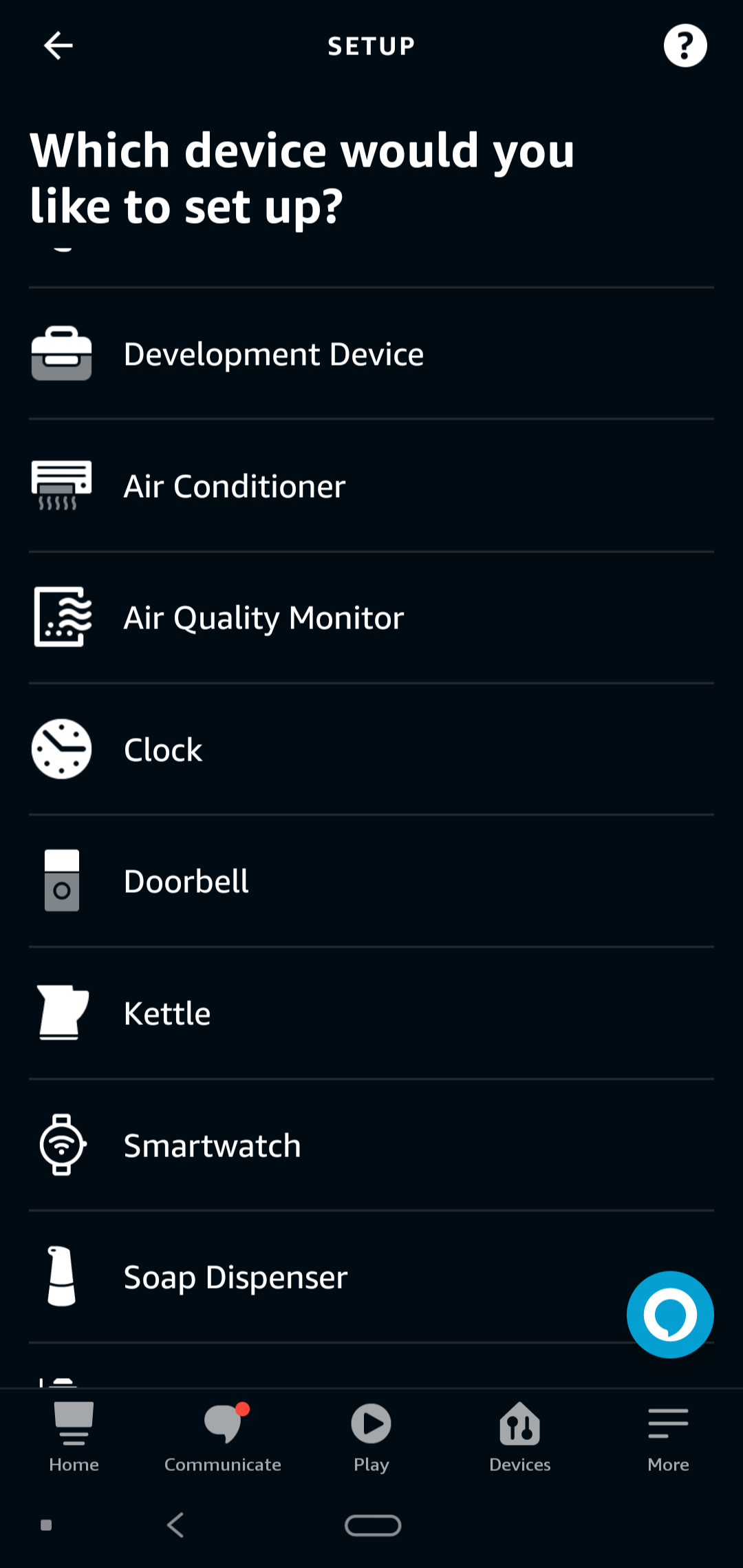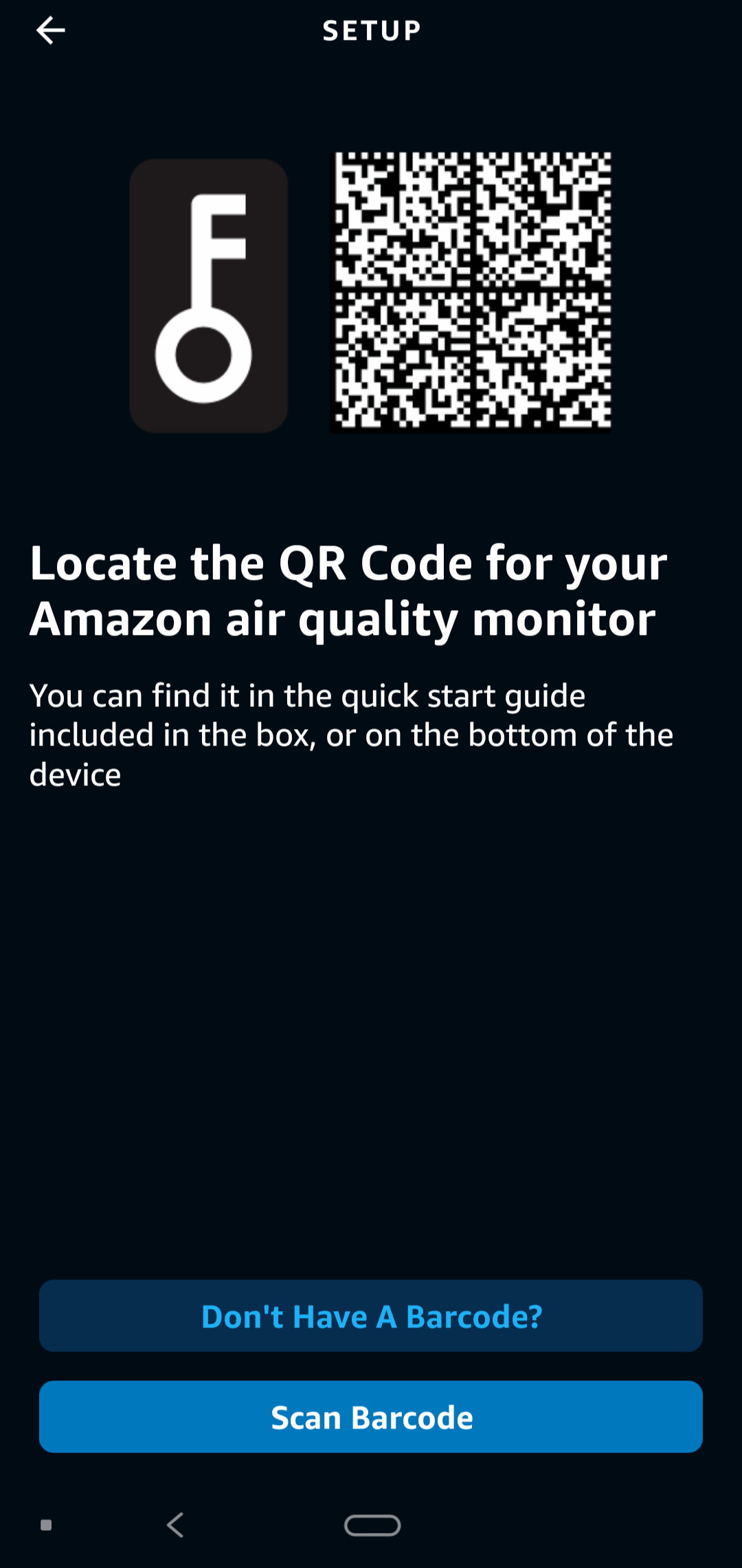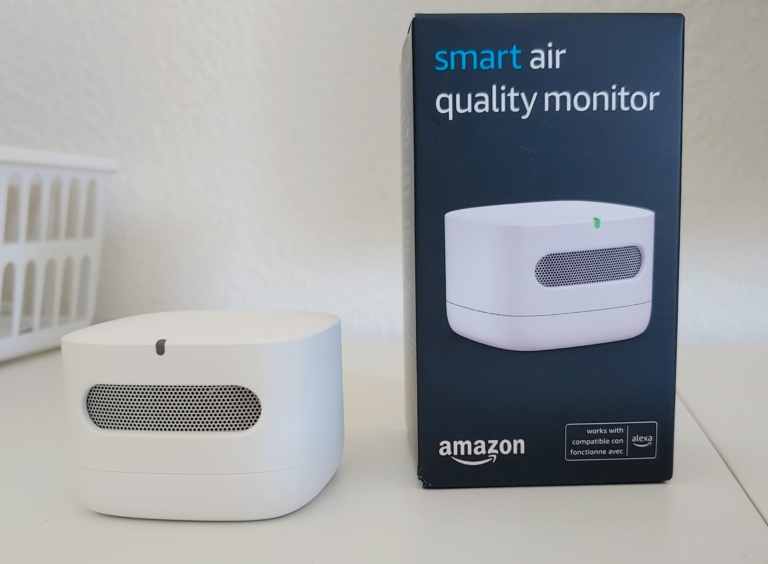Last Updated on June 7, 2023
Maintaining good air quality has become increasingly important for our overall health and well-being as we spend a significant portion of our lives indoors. Amazon entered the market in 2022 with its Amazon Smart Air Quality Monitor, a compact and sleek device designed to help users monitor and improve their indoor air quality.
With no shortage of air-cleaning devices on the market, many manufacturers have cropped up offering devices that want to tell us how dirty the air we breathe is. These consumer home air monitors range from handheld ones resembling multimeters to LCD displays mounted on the wall, similar to most smart thermostats. The Amazon monitor is neither handheld nor wall-mounted but rather a tiny roundish cube that sits on your shelf or desk. It sports a singular LED and no display, which helps it stay out of sight.
The Amazon monitor offers a wide range of monitoring capabilities. It can detect particulate matter, volatile organic compounds (VOCs), carbon monoxide, humidity, and temperature.
A micro USB connector powers it, and has no internal battery. Therefore, it can’t be tucked away wirelessly and is limited to places with outlet access.
You will first need to download the Alexa app to set up the Amazon monitor. Once in the Alexa app, plug in the device for power and follow the on-screen instructions for setting up via QR code.


Measuring the air quality
To test the basic measuring functions of the Amazon air monitor, I took a measurement of a standard bedroom to see what kind of numbers it would report.
The monitor reported an IAQ (Indoor Air Quality) of 99.

What does this data mean?
Particulate matter (2.5 micron in size) are microscopic particles that can be found floating in the air. Removing these tiny particles is the main function of most air-purifying devices on the market. Particulate matter is what leads to physical discomforts, such as irritation and allergic reactions. In extreme cases, it can lead to long-term health diseases.
Carbon Monoxide is most well known as the emissions from a car’s tailpipe. CO is emitted by many appliances inside the home, such as gas furnaces, dryers, stoves, etc. Many municipalities require a CO detector in the home in addition to smoke alarms due to its odorless and deadly nature.
Volatile Organic Compounds, or VOC, are gaseous emissions released by everyday products. The most well-known are aerosol products. VOC is one of the biggest contributors to the formation of the ozone layer.
Sensitivity
To really see if it was sensitive to changes in the environment, I moved the sensor to the kitchen to test pre and post-dinner preparations. The sensor was positioned approximately six feet away from the range top.
For an idle kitchen, the sensor data was:
Particulate Matter – 2µg/m3
Carbon Monoxide – 1ppm
VOC – 1
Once the burners were on full tilt and food crackling and sizzling, the data was as follows:
Particulate Matter – 19µg/m3
Carbon Monoxide – 2ppm
VOC – 5
During the food preparation, the Amazon monitor was able to detect changes in the air. The gas-burning appliance was the main driver in the increase in CO and VOC emissions. It is imperative that a ventilation fan be running when using a gas cooktop to help evacuate harmful vapors.
The Alexa App
All the measurement data is stored in the Alexa app, which is a double-edged sword. The Alexa app allows for routines and syncing with other Amazon Alexa devices.
For example, ask Alexa about the air quality via an Echo, and it will respond with data pulled from the monitor. Having access to long-term data is a major plus, but the app can be cumbersome for users’ simple tasks. Viewing basic data can require tapping through multiple screens.
The data can be filtered by hour, day, and weekly. Each measurement type is factored into the IAQ score and is individually selected at the top of the screen.
When looking through historical data, there is no way to directly jump to dates. There is no drill down to specific days in the weekly report. You must manually backtrack to that day.
With no data export function, the data stored within the app is more for “at a glance” than it is for actual analysis. This limitation can be frustrating for users who wish to analyze their air quality data in more detail. Sharing is not an option either.
Using the app is not the only way to check the air quality. The led on the front of the device acts as a basic indicator of air quality. If the IAQ is between 65-100, the light stays green. When quality drops between 35-64, it turns yellow. Poor air quality 34 and below trigger a red light.
Conclusion
The Amazon Smart Air Quality Monitor is a great device for people curious about their indoor air quality. All in a budget-friendly package that integrates with the Amazon ecosystem.
It offers several notable benefits, including comprehensive monitoring capabilities, a mobile app, and accurate measurements. For the price, I’d recommend keeping one in rooms with high occupancy, such as the family/living room and bedrooms.
However, there are some drawbacks to consider. The device’s reliance on the cumbersome Alexa app, lack of battery power, and inability to export user data may deter potential users. These cons should be weighed against the benefits to determine whether the Amazon Smart Air Quality Monitor is the right fit for your specific needs.
Overall, these features make it an attractive option for homeowners looking to improve their indoor air quality and maintain a healthy living environment.
3.5 out of 5.0 stars
Pros:
Economical compared to alternative full display units.
Can monitor anywhere via app
Accurate measurement of major air quality metrics
Cons:
Requires Alexa App
Can’t view data without WIFI
Needs power outlet

